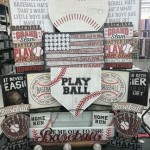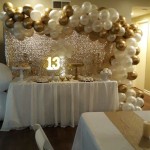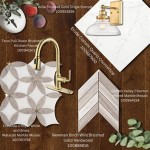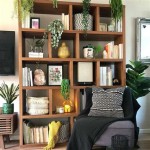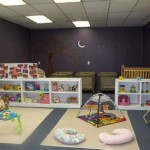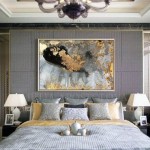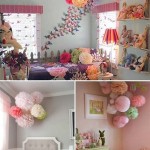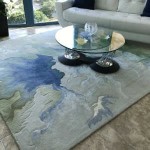Office Decorating Ideas For Men
Designing a workspace that is both functional and aesthetically pleasing is crucial for productivity and overall well-being. For men, creating an office environment that reflects personal style while maintaining professionalism can be achieved through thoughtful planning and execution. This article explores various office decorating ideas tailored to men, focusing on functionality, style, and personalized touches.
Prioritizing Functionality and Ergonomics
Before delving into aesthetics, establishing a functional and ergonomic workspace is paramount. Long hours spent at a desk can take a toll on physical health if the workspace is not properly configured. This involves careful consideration of furniture selection, lighting, and overall layout.
The foundation of any office is a sturdy and comfortable desk. Consider investing in a desk with ample surface area to accommodate all necessary equipment, including a computer, keyboard, monitor, and any other tools required for the job. Standing desks are increasingly popular and offer an alternative to sitting for extended periods, promoting better posture and circulation. When selecting a desk, prioritize materials that are durable and visually appealing. Wood, metal, and even tempered glass are excellent options, depending on personal preference and the overall style of the office.
Seating is equally critical. An ergonomic chair is an investment in long-term health and productivity. Look for a chair with adjustable height, lumbar support, and armrests. Leather or mesh upholstery can provide comfort and breathability. Test different chairs before purchasing to ensure a comfortable fit.
Proper lighting is essential for reducing eye strain and creating a conducive work environment. Natural light is ideal, so position the desk near a window if possible. Supplement natural light with artificial lighting, such as a desk lamp with adjustable brightness levels. Avoid harsh fluorescent lighting, which can be tiring and detract from the aesthetic appeal of the office. Task lighting is also important, especially for detailed work. A flexible arm lamp can provide focused illumination where needed.
Cable management is often overlooked but plays a significant role in maintaining a clean and organized workspace. Tangled cables can be distracting and create a cluttered appearance. Invest in cable ties, sleeves, and organizers to keep cords neatly bundled and out of sight. Consider a desk with built-in cable management solutions to further streamline the setup.
Storage solutions are crucial for keeping the office tidy and efficient. Shelves, drawers, and cabinets can be used to store documents, supplies, and other items. Utilize vertical space to maximize storage capacity without taking up valuable floor space. Opt for storage solutions that complement the overall style of the office. For example, wooden bookshelves can add warmth and sophistication, while metal cabinets can provide a more industrial look.
Defining Style and Incorporating Personal Touches
Once the functional aspects of the office are addressed, attention can be turned to defining the style and incorporating personal touches. This is where individual preferences and aesthetics come into play. Consider various design styles, such as minimalist, modern, industrial, or traditional, and choose one that resonates with personal taste.
A minimalist approach emphasizes simplicity and functionality. This style typically involves neutral color palettes, clean lines, and minimal clutter. Furniture should be functional and unobtrusive. Accessories are kept to a minimum, focusing on essential items that serve a purpose. A minimalist office can create a calm and focused environment.
Modern office designs often incorporate sleek lines, geometric shapes, and a blend of materials such as metal, glass, and wood. Color palettes can be bold or muted, depending on personal preference. Modern offices often feature technology-driven elements, such as smart lighting and wireless charging stations. Artwork and decorative pieces are carefully selected to complement the overall design.
Industrial office designs draw inspiration from factories and warehouses. This style typically features exposed brick, concrete floors, and metal accents. Furniture is often rugged and utilitarian, with a focus on functionality. Industrial offices can incorporate vintage or reclaimed items to add character and authenticity. Darker color palettes, such as grays and blacks, are common in industrial designs.
Traditional office designs evoke a sense of timeless elegance and sophistication. This style often features rich wood tones, leather upholstery, and classic furniture pieces. Color palettes are typically warm and inviting, with shades of brown, beige, and navy. Traditional offices may incorporate antique or reproduction pieces to add character and historical charm.
In addition to choosing a design style, incorporating personal touches can make the office feel more welcoming and inspiring. Displaying artwork, photographs, or collectibles can add personality and reflect individual interests. Choose items that are meaningful and visually appealing. A well-curated collection of books can also add character and provide intellectual stimulation.
Plants can bring life and vibrancy to the office. Greenery can improve air quality, reduce stress, and create a more pleasant atmosphere. Choose low-maintenance plants that are suitable for indoor environments, such as succulents, snake plants, or ZZ plants. Consider the size and placement of plants to ensure they complement the overall design.
Personalizing the desk is another way to make the office feel more like home. A stylish desk organizer can help keep supplies tidy and within reach. A comfortable mouse pad and keyboard wrist rest can improve ergonomics and reduce strain. A high-quality pen and notebook can make writing tasks more enjoyable. Small personal items, such as a favorite mug or a meaningful paperweight, can add a touch of personality to the workspace.
Selecting a Color Palette and Materials
The choice of color palette and materials plays a crucial role in defining the overall look and feel of the office. Colors can influence mood, productivity, and creativity. Materials can add texture, warmth, and visual interest. Carefully consider the desired atmosphere and choose colors and materials that align with personal preferences and the chosen design style.
Neutral color palettes are a safe and versatile option for office environments. Shades of gray, beige, white, and black can create a calm and sophisticated atmosphere. Neutral colors also provide a blank canvas for incorporating pops of color through accessories and artwork. A neutral palette can be particularly effective in minimalist and modern office designs.
Warm color palettes, such as shades of brown, orange, and yellow, can create a cozy and inviting atmosphere. These colors can evoke feelings of warmth, comfort, and energy. Warm colors are often used in traditional and rustic office designs. However, it is important to use warm colors sparingly, as too much warmth can be overwhelming.
Cool color palettes, such as shades of blue, green, and purple, can create a calming and refreshing atmosphere. These colors can promote focus, concentration, and relaxation. Cool colors are often used in modern and minimalist office designs. Blue is a particularly popular choice for offices, as it is associated with productivity and trustworthiness.
In addition to choosing a color palette, consider the materials used in the office. Wood can add warmth, texture, and natural beauty to the space. Different types of wood, such as oak, walnut, and maple, can create different effects. Metal can add a sleek, modern, and industrial touch. Stainless steel, aluminum, and iron are common choices for metal accents. Glass can create a sense of openness and transparency. Tempered glass is a durable and safe option for desks, shelves, and partitions.
Textiles can also play a significant role in defining the look and feel of the office. Leather upholstery can add a touch of luxury and sophistication. Fabric upholstery can provide comfort and warmth. Rugs can add texture and define different areas within the office. Choose textiles that are durable, easy to clean, and visually appealing.
Lighting also impacts how materials and colors are perceived. The light sources, the intensity, and the positioning of the lights can either enhance or diminish the other elements in a room. Think about how lighting interacts with materials when making decisions.
Ultimately, the key to successful office decorating for men is to create a space that is both functional and stylish, reflecting personal taste while maintaining professionalism. By prioritizing ergonomics, defining a style, incorporating personal touches, and carefully selecting colors and materials, it is possible to create an office environment that is conducive to productivity, creativity, and overall well-being.

10 Home Office Decor Ideas For Him Refresh Restyle

53 Best Men S Office Decor Ideas Mens

Mens Office Decor How To Design The Perfect Home

Masculine Office Decor

59 Stylish And Dramatic Masculine Home Offices Digsdigs

Elevate His Workspace Masculine Home Office Decor Ideas For The Modern Man Lifestyle M Interior Design

57 Masculine Men S Home Office Decor Ideas In 2025

25 Ultimate Masculine Home Office Ideas

35 Home Office Decor Ideas Designs For A Creative Work Space

Decorating An Office For A Man Masculine Ideas Decor

